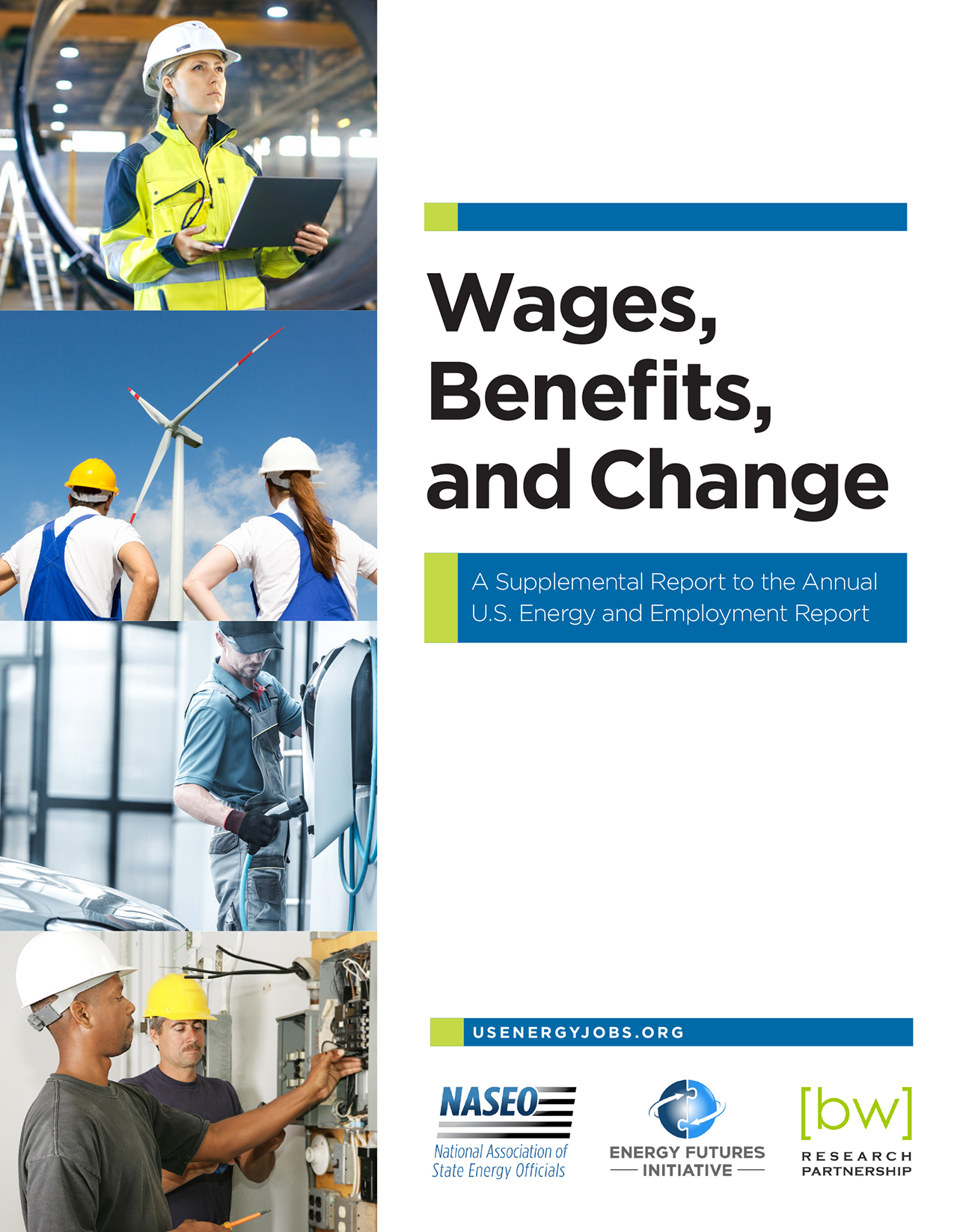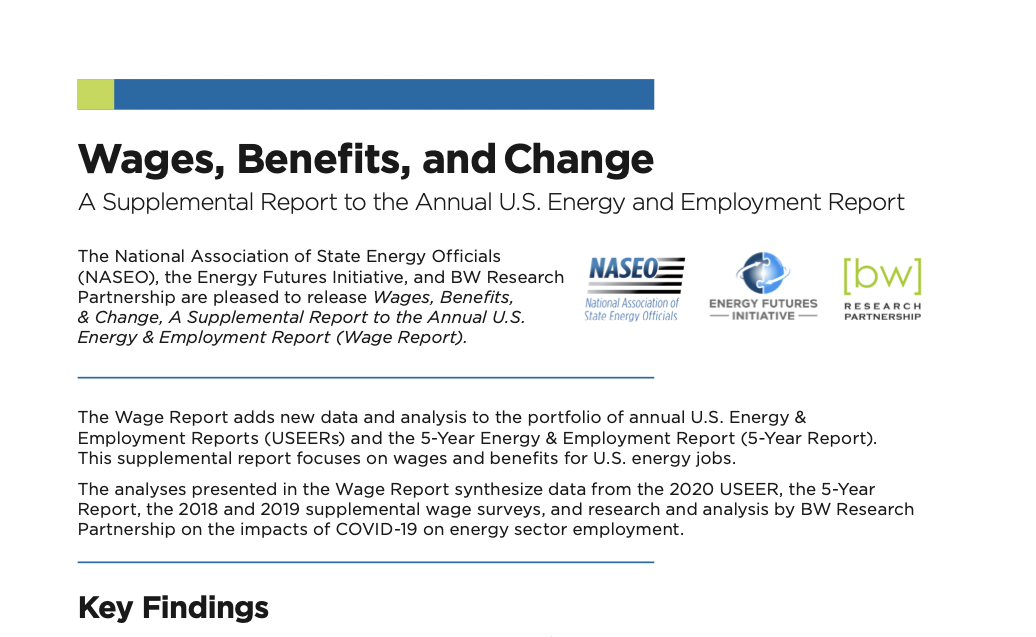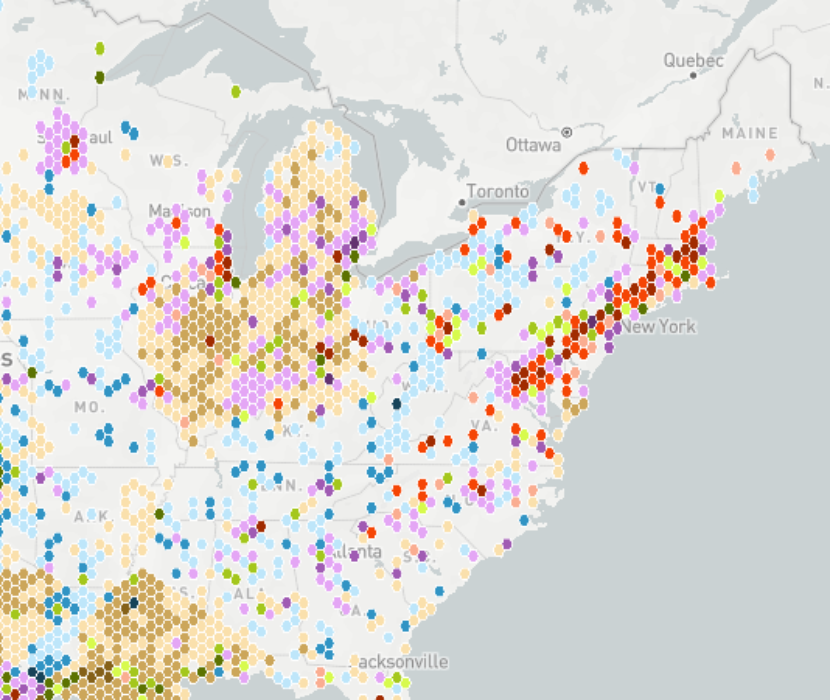Wages, Benefits & Change: A Supplemental Report to the Annual U.S. Energy & Employment Report (April 2020) was published by the Energy Futures Initiative (EFI) and the National Associations of State Energy Officials (NASEO). It added new data and analysis to the portfolio of annual U.S. Energy & Employment Reports and the 5-Year Energy & Employment Report. This supplemental survey focused on wages and benefits for U.S. energy jobs, as well as the early impacts of COVID-19 on energy sector employment.
Among the major findings of the wage report:
- At the end of 2019, the five major energy technology sectors—electric power generation; fuels; transmission, distribution, and storage; energy efficiency; and motor vehicles—employed more than 8.27 million workers, accounting for 5.4 percent of all jobs in the United States.
- Between 2015 and 2019, these sectors created about 915,000 new jobs—almost 11 percent of all employment growth in the nation. During this period, energy jobs in the United States grew at almost twice the rate of the overall economy.
- The median hourly wage for all energy workers in the U.S. is $25.60, which is 34 percent higher than the national median hourly wage of $19.14.
- While the energy sector was impacted by the COVID-19 pandemic, the energy industry lost fewer jobs than other sectors of the economy, such as tourism, hospitality and recreation, information and communications, retail, and building and design.
Presentation of Findings
Supplemental Material
Related Content
(Share this post with others.)







